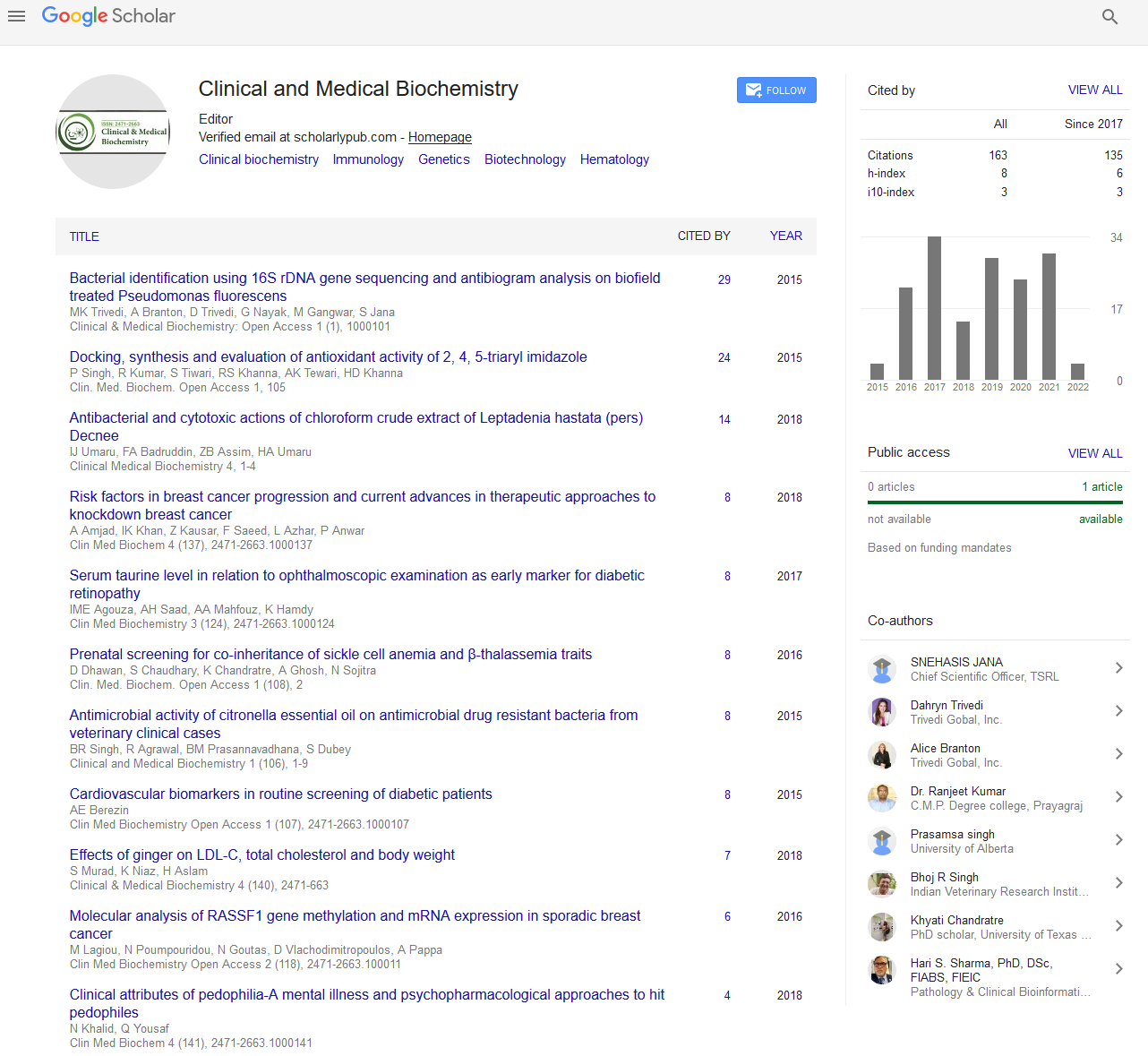Indexed In
- RefSeek
- Directory of Research Journal Indexing (DRJI)
- Hamdard University
- EBSCO A-Z
- OCLC- WorldCat
- Scholarsteer
- Publons
- Euro Pub
- Google Scholar
Useful Links
Share This Page
Journal Flyer

Open Access Journals
- Agri and Aquaculture
- Biochemistry
- Bioinformatics & Systems Biology
- Business & Management
- Chemistry
- Clinical Sciences
- Engineering
- Food & Nutrition
- General Science
- Genetics & Molecular Biology
- Immunology & Microbiology
- Medical Sciences
- Neuroscience & Psychology
- Nursing & Health Care
- Pharmaceutical Sciences
Abstract
Is Elevated Circulating Galectin-3 Level A Predictor of Pulmonary Artery Hypertension Development and Progression?
Pulmonary arterial hypertension (PAH) is a heterogenic group of devastating disorders that characterizes higher rates of mortality and morbidity worldwide. Recent clinical studies have shown that clinical features, hemodynamic parameters, echocardiography patter, multi-spiral computer tomography findings, exercise capacity, and anti-nuclear antibody profiles could be used as predictors of clinical severity and outcomes in PAH patients. However, the reliability, sensitivity, specificity and predictive value are derived from PAH patients with different comorbidities and specific complications associated with connective tissue disease (CTD), congenital heart disease and respiratory disease might be unacceptable. The aim of the mini review: to summarize the knowledge regarding predictive value of galectin-3 as a biomarker in PAH individuals. The mini review is argued the perspective to utilize single sample and serial measurements of Gal-3 as a regulatory peptide contributed in PAH pathogenesis aimed to improve prediction of PAH development and progression.


